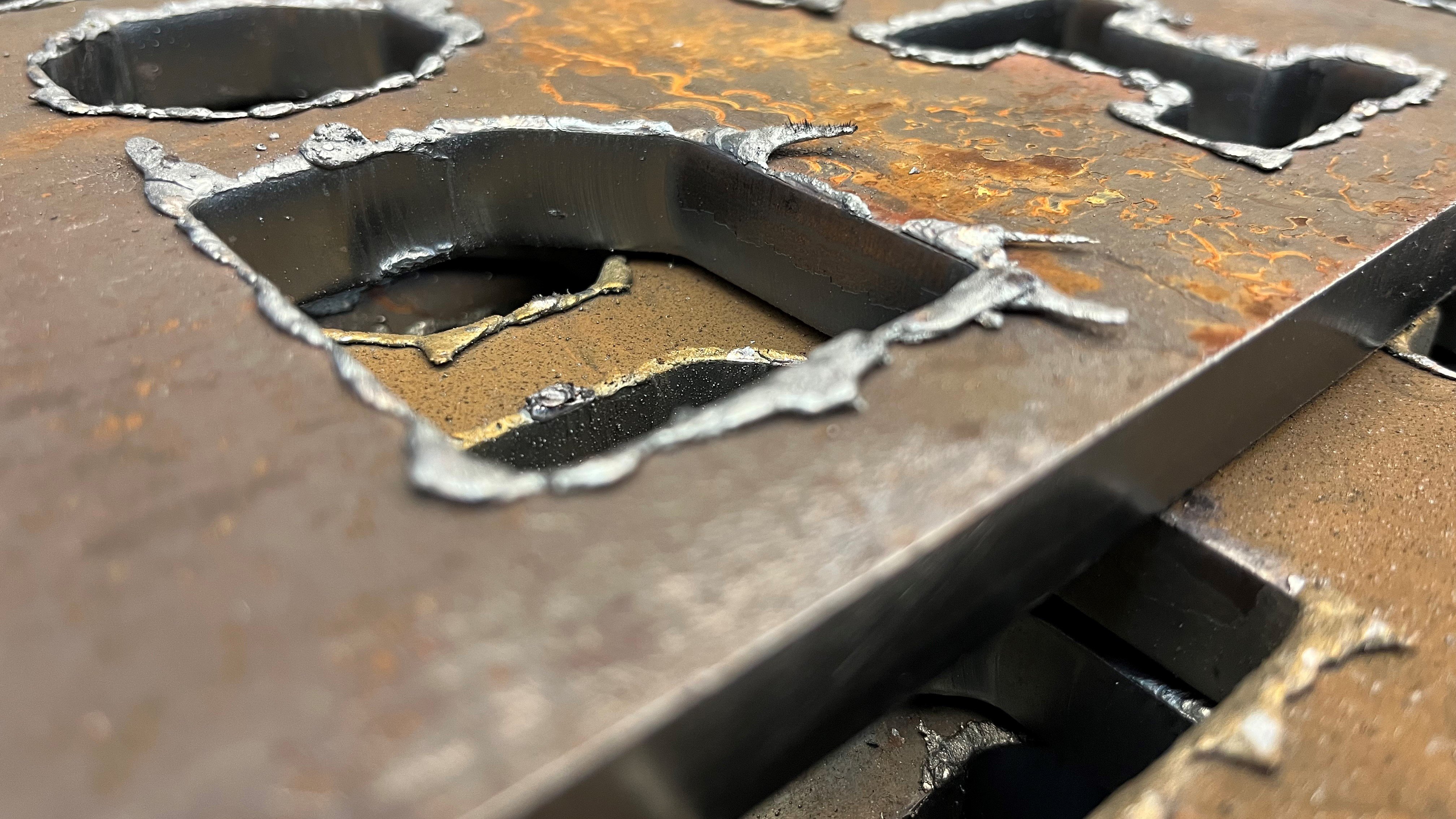Generally speaking, oxyfuel cutting or flame cutting refers to all cutting processes in which material is burned. In most cases, these terms are used as a proxy for autogenous flame cutting or oxyfuel cutting. In this cutting process, a flame heats the material at the surface until its ignition temperature is reached. This is between 1150 and 1250 °C for mild steel, for example. In addition, oxygen is blown into the kerf. At this point the material starts to burn, and the cutting process begins. In the further course, the combustion releases further heat. This in turn heats the underlying material up to ignition temperature. This allows the process to continue automatically (autogenously) into the depths. The metal oxides are made thin by the heat and are blown out of the kerf together with the cutting oxygen.

Flame cutting requires certain material properties
In order to use flame cutting, three conditions must be met.
- The ignition temperature of the material must be lower than its melting temperature. If the opposite is the case, one must resort to fusion cutting. When it comes to steel, this means that low-alloy steels and steels with low carbon content are well-suited for flame cutting. Pure flame cutting is possible up to a carbon content of 0.85%. Tool steel or cast iron, both of which have a high carbon content, cannot be separated by flame cutting. Also, most alloying elements increase the ignition temperature.
- The metal oxides formed during combustion must have a lower melting temperature than the material itself. This is because they can only be blown out of the cut as liquid droplets. This condition is not met, for example, with aluminum, chromium, and nickel oxides. Therefore, neither aluminum nor Cr-Ni steels can be processed by flame cutting. In addition, the metal oxides should be as thin and fluid as possible for effective blowing out. However, this is not the case with aluminum, as well as with the alloying elements chromium and silicon.
- The material should have a low thermal conductivity. Otherwise, the heat will be dissipated into the entire material body when the cutting torch is applied. This means that the workpiece heats up evenly and not mainly at the kerf. As a result, the deeper layers of the material do not ignite, and the cutting process does not continue autonomously. The process does not continue autogenously, but comes to a standstill. This is why copper cannot be flame cut.
Autogenous flame cutting is used for unalloyed and low-alloyed steels with medium to large plate thicknesses. It is popular for plate thicknesses from 50 mm; above 250 mm there is currently no alternative. On the other hand, flame cutting distorts the sheets if they are less than 5 mm thick. In addition, titanium can also be cut using the process, although the prerequisites are theoretically not met. Flame cutting is standardized in DIN 2310-6.
Post-cutting parts need post-processing.
Flame cutting also always produces burrs and slag. This is due to the fact that primarily thick sheets are processed with this method. The thicker the sheet, the higher the energy input must be during cutting. This, together with the blowing out of the liquefied material and the oxides, results in sharp-edged material residues, the burrs, and deposits of the oxides, the slag. Deburring machines and slag hammers can be used to remove both. However, the deburring machines must be able to remove the large and thick burrs. This works with a grinding roller, but not with deburring brushes.



